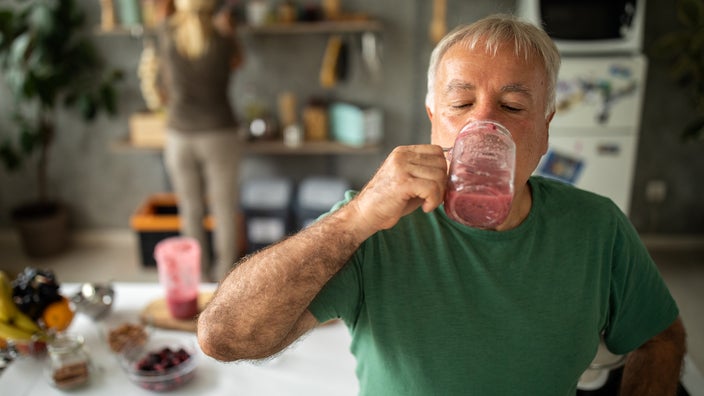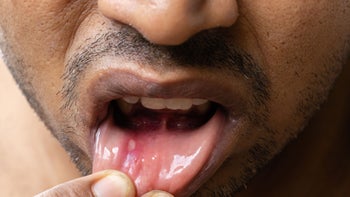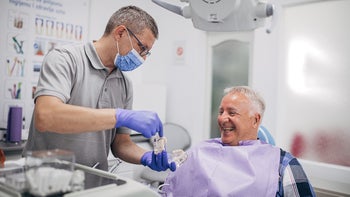
What You Should (and Should Not) Eat After a Tooth Extraction
Key takeaways:
Getting a tooth removed (tooth extraction) will affect what you can eat. Following a balanced diet is important to promote healing and reduce the risk of complications.
Soft foods that are high in protein and healthy fats can be beneficial for a smooth and speedy recovery after a tooth extraction.
Some foods can increase the risk of irritation and infection at the extraction site. This includes hard, crunchy, and acidic foods, as well as carbonated drinks and alcohol.

A tooth extraction is uncomfortable — and it can make it difficult to find something easy to eat. But there’s another reason you should be careful about what you eat after a tooth removal. Being mindful of your diet can help prevent damage after surgery.
That’s important because the healing process starts immediately after a tooth extraction. Your dentist will place some cotton gauze in the area for you to bite into. The pressure helps to decrease the bleeding from your tooth’s socket by forming a blood clot.
The wrong foods can disturb the surgery site and prevent the blood clot from forming or staying put. This disruption can slow recovery, increase the risk of infection, and cause complications like a dry socket. On the other hand, taking in the right nutrients can speed up your healing, reduce swelling, and give you the energy you need to recover.
Search and compare options
What foods can you eat after a tooth extraction?
The best foods to eat after wisdom teeth removal –– or any tooth extraction –– are soft and nutrient-rich. In fact, many dentists recommend sticking to liquids and soft, easy-to-eat foods for at least 24 to 48 hours after a tooth extraction. A balanced diet with liquids and soft foods can promote healing and lessen discomfort. Examples include fruits, vegetables, starches, high-protein foods, and healthy fats.
Liquid diet
You may not be able to tolerate soft foods during the first few days after tooth extraction, as tenderness and swelling is common. If so, you should stick to a strictly liquid diet.
A liquid diet may include:
Vegetable juices
Water
Caffeine-free beverages
Warm (not hot) pureed soups
Gelatin
Smoothies
Avoid using a straw right after a tooth extraction. The sucking action can cause excess strain and move the newly formed blood clot, which delays recovery.
Soft diet
As your mouth begins to heal, you can transition to a soft diet with foods that are easy to chew and swallow. These foods may be chopped or ground into small pieces. Or they can be mashed up or pureed in a blender before eating.
Here are some soft foods to eat after tooth extraction:
Soups with soft vegetables or meat
Soft grains (like oatmeal, rice, cream of rice, and risotto)
Cooked pasta
Ripened sliced bananas
Applesauce
Baked apples (without the skin)
Baked or boiled sweet potatoes or yams
Spinach
Beets
Cooked carrot slices
Mashed potatoes
How much does it cost to have a tooth extracted? It depends on several factors, including whether you have dental insurance. Learn more about how much it costs to have a tooth pulled.
Does it hurt to have your wisdom teeth removed? Three people who had their wisdom teeth removed weigh in.
How long should you wait to exercise after a tooth extraction? Get expert recommendations, plus tips for returning to exercise after a tooth extraction.
High-protein foods
It’s important to include high-protein foods in your diet. Doing so can help speed up the healing process. You can add protein to smoothies or soups.
Foods that are high in protein include:
Protein powder
Yogurt (Tip: Greek yogurt is higher in protein than regular yogurt.)
Cottage cheese
Tofu
Lean meats and fish
Scrambled eggs
Healthy fats
You can add healthy fats to promote wound healing. Some healthy fats to include in your diet are:
Avocado
Olive oil
Coconut oil
Coconut butter
Flax oil
What foods should you avoid after tooth extraction?
To ensure a quick recovery, avoid foods that can irritate the open tooth socket. Any foods that may get stuck in the open tooth socket will interfere with the blood clot forming. This can delay your healing process and may cause a painful infection.
Foods to avoid after a tooth extraction include:
Hard, crunchy, or chewy foods (like seeds, nuts, chips, and candies)
Acidic foods (like citrus fruits and tomatoes)
Hot and spicy foods
Carbonated beverages
Alcohol
Frequently asked questions
Many dentists recommend waiting 3 to 7 days after a tooth extraction before drinking carbonated beverages like soda or sparkling water. The bubbles in these drinks can dislodge the blood clot that forms at the extraction site. Be sure to follow your dentist’s specific recommendations, as they may vary from person to person.
It’s best to avoid bread right after a tooth extraction, especially if it’s hard, crusty, or has seeds. It can be hard to chew, and crumbs or seeds can get stuck in the extraction site. You might be able to have soft bread after a few days. But be sure to get your dentist’s OK.
Oatmeal can be a good option 2 to 3 days after a tooth extraction when the blood clot has formed and the healing process is underway. Consider instant oatmeal or quick oats, which are usually softer and easier to chew than steel-cut oats. Make sure it’s lukewarm, not hot, and avoid hard or crunchy toppings.
The bottom line
Having a tooth extraction may be a scary experience. But you may be able to speed up your recovery and prevent complications by following a proper diet.
Contact your dentist if you’re not sure what to eat after a tooth extraction. They can help you make the right dietary choices for a smooth recovery.
Why trust our experts?



References
Kuśnierek, W., et al. (2022). Smoking as a risk factor for dry socket: A systematic review. Dentistry Journal.
Lau, B. Y., et al. (2013). Dietary strategies to optimize wound healing after periodontal and dental implant surgery: An evidence-based review. The Open Dentistry Journal.
Mamoun, J. (2018). Dry socket etiology, diagnosis, and clinical treatment techniques. Journal of The Korean Association of Oral and Maxillofacial Surgeons.
Mouthhealthy. (n.d.). Extractions: Having a tooth removed. American Dental Association.
Russell, L. (2001). The importance of patients’ nutritional status in wound healing. British Journal of Nursing.

























